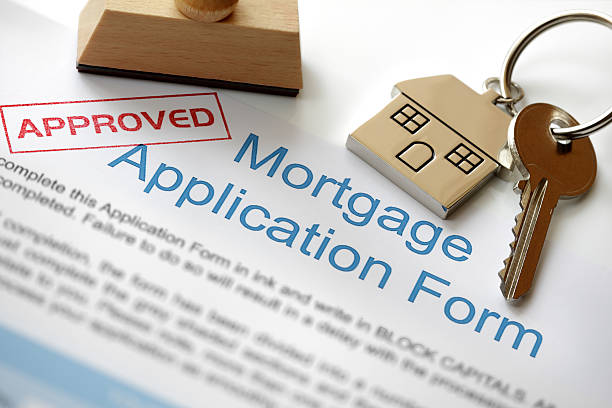How to Get Approved for a Mortgage Loan with Bad Credit in the U.S

Mortgage Loan in the U.S
Let’s be honest—having bad credit can make getting approved for a mortgage in the U.S. feel like an uphill battle. But here’s the good news: it’s not impossible. In fact, many Americans buy homes every year despite having less-than-perfect credit. You just need the right strategy, a little patience, and a solid understanding of how lenders think.
Here’s a straightforward, human-friendly guide to getting a mortgage loan with bad credit.
Know What “Bad Credit” Means to Lenders
Your credit score is one of the first things a lender looks at. Here’s how it’s generally categorized:
Excellent: 740 and above
Good: 700–739
Fair: 620–699
Poor: Below 620
Most conventional loans require at least a 620 score. But there are options—like FHA loans—that go as low as 580 (sometimes even 500 with a larger down payment).
Tip: Check your credit score before you apply, and review your credit reports for any errors. You can get a free report annually from AnnualCreditReport.com.
2. Consider an FHA Loan
If your score is below 620, an FHA (Federal Housing Administration) loan might be your best bet. These loans are specifically designed for buyers with low-to-moderate income or less-than-perfect credit.
Credit Score 580+: You may qualify with just a 3.5% down payment.
Credit Score 500–579: A 10% down payment is usually required.
FHA loans are backed by the government, so lenders are more willing to approve borrowers with credit challenges.
3. Increase Your Down Payment
The more you can put down upfront, the better. A larger down payment reduces the lender’s risk—and can make them more likely to approve your loan, even with a low credit score.
Aim for at least 10% down if your credit score is below 600.
A 20% down payment can help you avoid private mortgage insurance (PMI), which lowers your monthly costs.
Can’t come up with that much cash? Look into down payment assistance programs in your state—they can be a big help for first-time homebuyers.
4. Keep Your Debt-to-Income (DTI) Ratio Low
Lenders care just as much about your debt-to-income ratio as they do about your credit score. This ratio compares your monthly debt payments to your income.
Try to keep your DTI under 43%, though some lenders may accept higher for FHA loans.
To lower your DTI:
Pay down credit card debt
Avoid taking on new loans
Increase your income if possible (side gigs, part-time work, etc.)
5. Show Stability and Consistency
Even with bad credit, you can impress lenders by showing consistent income and job history. Most want to see:
At least 2 years of steady employment
Reliable monthly income
Clean banking history (no bounced checks or overdrafts)
If you’re self-employed, be prepared to show tax returns, profit/loss statements, and bank records.
6. Write a Letter of Explanation (LOE)
If your bad credit is due to a specific hardship—like medical bills, job loss, or divorce—write a short, honest Letter of Explanation. Lenders appreciate transparency, especially if your situation has improved.
Be specific, and show how you’ve taken steps to recover financially.
7. Get Pre-Approved Before You House Hunt
Before you fall in love with a house, talk to lenders and get pre-approved. It gives you a clear idea of what you can afford and shows sellers you’re a serious buyer.
Not all lenders treat bad credit the same way. Shop around and compare offers from:
Mortgage brokers
Credit unions
Online lenders
Local banks
Look for those who specialize in bad-credit or FHA loans.
8. Consider a Co-Signer
If possible, ask a trusted family member or friend with good credit to co-sign the loan with you. This can increase your chances of approval—but it’s a serious commitment. If you miss payments, it affects both your credit scores.
9. Avoid “No Credit Check” or High-Risk Loans
Be cautious of lenders who advertise guaranteed approvals, especially with high interest rates and fees. These types of loans can put you in worse financial shape. Always read the fine print, and if something feels shady—walk away.
10. Work on Improving Your Credit (Even a Little)
While you’re house-hunting or saving for your down payment, take small steps to improve your credit:
Pay all bills on time
Pay down credit cards (keep usage below 30%)
Don’t open or close accounts unnecessarily
Dispute any errors on your report
Even a 20–30 point increase in your score could get you better terms or open up more loan options.
Getting a mortgage with bad credit in the U.S. isn’t easy—but it’s absolutely doable. Lenders look at your full financial picture, not just a number. If you’re honest about your situation, build a strong application, and stay persistent, homeownership can be within reach.
Take it one step at a time—and don’t be afraid to ask for help from a loan officer, housing counselor, or trusted financial advisor. You’ve got this.

krista Bendova
krista Bendova is a passionate health and wellness writer who shares her expertise to inspire readers to prioritize self-care. With a background in holistic nutrition and alternative therapies, she provides practical advice, mindful living tips, and natural remedies. Isabella’s genuine interest in well-being extends beyond her writing, as she enjoys practicing yoga, exploring organic farming, and experimenting with herbal remedies in her own garden.








